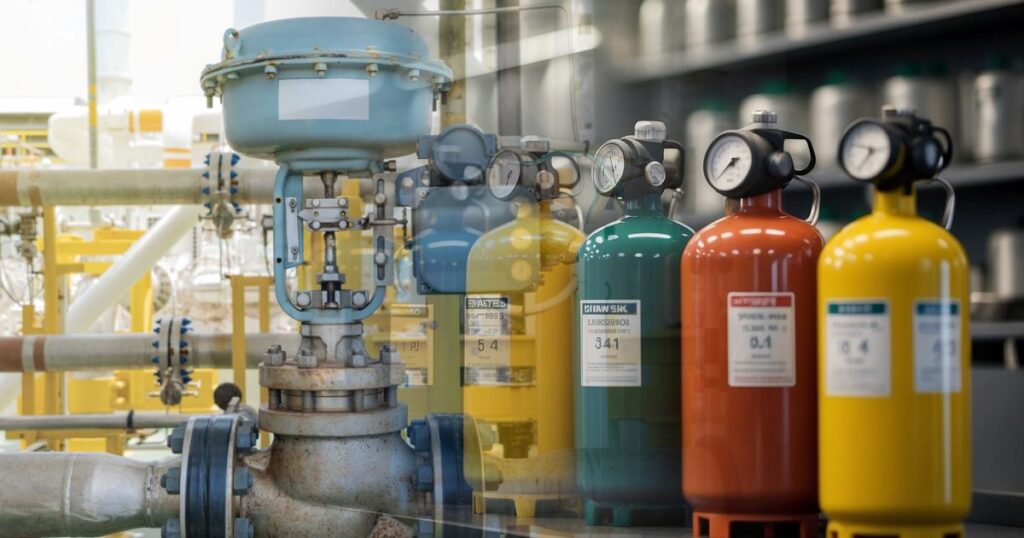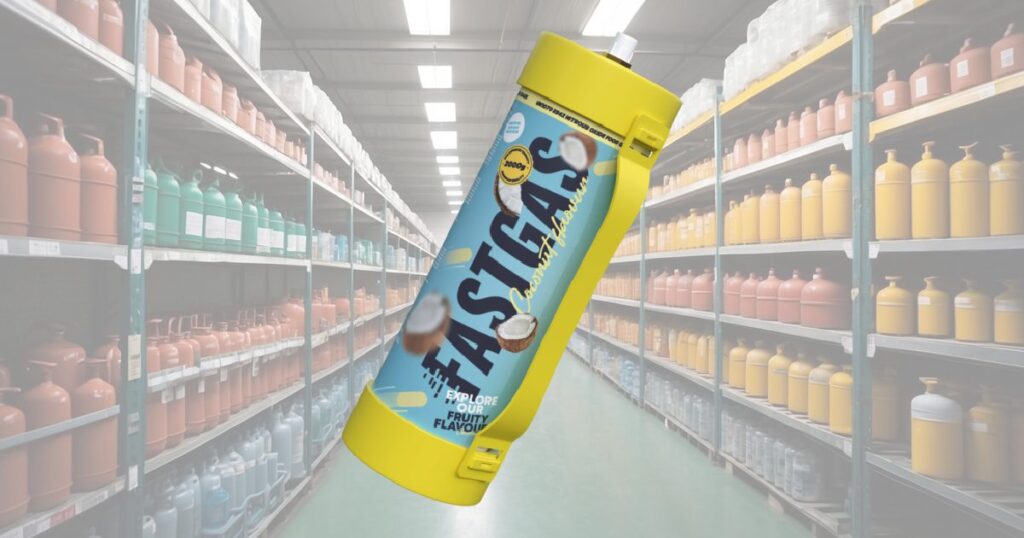Types of Gas Cylinders: Understanding Various Storage Options
FastGas Blog
Gas cylinders are essential containers for the storage and transportation of various gases. Their design allows for the safe handling of gases like butane, propane, oxygen, carbon dioxide, nitrogen, and hydrogen under pressure. These cylinders come in different materials, including steel, aluminium, composite, and alloy, to suit specific needs and applications. As you read along, you will discover the types of gas cylinders.
Depending on your requirement, whether for home use such as cooking and heating, industrial purposes like welding, medical applications, or even fire fighting and space exploration, there is a type of gas cylinder suited for the task. Moreover, these cylinders are each built according to set standards and regulations to ensure safety and efficiency in every use case.
Key Takeaways
- Gas cylinders are made of various materials containing different types of gases for various applications.
- Choosing the correct type of gas cylinder for specific needs is crucial to ensure safety and operational efficiency.
- Adhering to safety regulations and proper handling is paramount when using gas cylinders at home or in the workplace.
Gas Cylinder Fundamentals
Gas cylinders store compressed gases that serve a variety of applications, ranging from industrial processes to medical uses. Materials and construction methods ensure safety and functionality, while cylinder types and sizes cater to specific needs and capacities.
Materials and Construction
Gas cylinders are typically made from steel, aluminium, or composite materials. Steel cylinders are valued for their durability and lower cost but are heavier. In contrast, aluminium cylinders weigh less, making them more portable but with a higher price tag. The more recent composite cylinders comprise a combination of materials, including a composite wrap over a metal liner, providing lightness and strength but at a higher cost.
Types and Uses
Cylinders are categorised by their construction type. Type 1 cylinders are all metal, primarily steel or aluminium, ideal for stationary and high-volume industrial uses due to their robustness and lower cost. However, for applications where portability is key, composite cylinders — such as Types 2, 3, and 4 — are preferred for their reduced weight, even though they are more costly than their all-metal counterparts. Moreover, the contents of a gas cylinder determine its use, from liquefied gases that maintain a liquid-vapour balance to compressed gases that stay entirely in the gaseous phase.
Cylinder Sizing and Capacities
Gas cylinders come in various sizes and are designed to meet specific needs based on the required volume and capacity. Furthermore, the capacity measures how much gas the cylinder can hold, usually quantified in litres or cubic meters. The sizing ranges from small, handheld bottles to large industrial-sized tanks, enabling you to choose based on the gas’s intended application. The pressure within a cylinder is generally high to maximise the gas quantity it can contain, which is controlled and regulated through a valve for safe and precise usage.
Operational Safety and Regulations
In managing gas cylinders, your safety and adherence to regulations are paramount. Understanding the correct procedures is essential to handle oxygen for medical purposes, nitrogen in industrial settings, or helium for laboratory use.
Handling and Transportation
When you move and handle gas cylinders, including medical, industrial, and speciality gas, always maintain a secure grip on the valve protection cap or collar. For transportation within your facility:
- Use appropriate cylinder carts or carriers designed for gas cylinders
- Avoid dragging or rolling cylinders across the floor
- Ensure valves are closed, with caps and guards in place
For transportation on public roadways, the United States Department of Transportation (DOT) requires adherence to specific regulations:
- Comply with DOT regulations for the safe transport of pressurised containers
- Regularly check for updated compliance rules from the DOT to reflect current standards
Inspection and Maintenance
To maintain operational safety and prolong the lifecycle of gas cylinders such as medical oxygen, nitrogen, or nitrous oxide, keep the following in mind:
- Perform routine visual inspections for signs of damage, corrosion, or wear
- Check the date of manufacture and serial number on the neck ring for tracking
- Conduct pressure tests like hydrostatic or burst tests in line with DOT standards
Remember:
- Replace or service components, such as valves and pressure relief devices, as needed.
- Ensure a certified professional carry out any repairs to prevent leaks or other hazards.
Compliance and Standards
Adherence to compliance and standards ensures the safe usage of gas cylinders:
- Follow guidelines from the DOT and other relevant authorities, including storage, handling, and transport
- Comply with specific regulations for medical gases in healthcare and bottled gas in industrial applications
- Use the CGA (Compressed Gas Association) cylinder valve outlet and inlet connections standards
For speciality gases used in laboratories or healthcare settings, such as medical-grade oxygen:
- Reference the specific standards for pressure cycling and fitting to maintain safety and efficacy
- Implement regular training for your staff on safe storage, proper handling, and emergency procedures
By following these procedures, you ensure the safety of your operations and the integrity of the gases you use.
Frequently Asked Questions
In this section, you’ll find a comprehensive guide to the types and specifications of gas cylinders, their uses and safety requirements.
What are the different types of gas used in cooking cylinders?
Cooking cylinders typically use propane or butane. Propane gas is preferred for outdoor use and colder climates due to its lower boiling point, while butane is suited for indoor or warmer weather.
What are the specifications and sizes available for gas cylinders?
Gas cylinders come in various sizes, from small portable canisters to large industrial tanks. Specifications often include the material of construction, pressure rating, and volume capacity. Also, sizes can vary from 4.5 kilograms to 47 kilograms for domestic use and much larger for commercial applications.
How do gas cylinder standards differ for commercial and domestic use?
Commercial gas cylinders are usually larger, have higher pressure ratings, and require more stringent safety standards due to the larger volume of gas and the higher usage rates. Domestic cylinders are smaller, designed conveniently, and cater to household cooking or heating requirements.
Can you explain the differences between Type 3 and Type 4 gas cylinders?
Type 3 gas cylinders have an aluminium liner wrapped with carbon and glass fibre, making them lighter than steel cylinders. Type 4 cylinders, on the other hand, are composed entirely of a plastic liner with carbon fibre or glass fibre composite and are the lightest and most corrosion-resistant.
How many gas cylinders are commonly used, and what distinguishes them?
There are four major types of gas cylinders: Type 1 is all-metal, typically steel or aluminium; Type 2 has a metal liner with a partial composite wrap; Type 3 is fully composite with a metal liner; and Type 4 is fully composite with a non-metallic liner. They are distinguished by their weight, durability, and pressure capacity.
What safety considerations are there for stands and storage of gas cylinders?
Gas cylinders should be stored upright in a well-ventilated area, away from ignition sources. Cylinders should also be secured to prevent tipping, using stands or restraints designed for that purpose. Regular checks for leaks and ensuring proper fittings and regulators are also crucial for safety.






